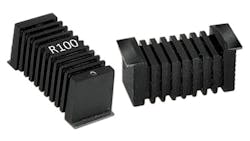When people first learn about electronics, they’re usually taught how resistors, capacitors, and inductors interact in a circuit. Since these components have been around a long time, you might think there’s nothing more to say about them and certainly not much innovation going on. Nothing could be further from the truth. Just look at our annual list of the Top 101 Components to see that fully 10% of them are passives.
We’ve written about these specific products and more over the past year. For instance, in our new online Ask The Expert series, Tamara Schmitz, an applications manager at Intersil, wrote about selecting components for prototypes. In particular, she wrote about selecting resistors. In the photo that accompanies her article, the resistors look like the common ones we’re all used to seeing.
But Tamara also writes about a dizzying array of choices you might find at a distributor’s Web site. She notes that “they are categorized by the way they are mounted: surface mount, through hole, chassis mount, array… or two others: precision or accessories. Many designers just start clicking away and hope for pictures that can be deciphered.” You can find Tamara’s full post here.
Bill Laumeister of Maxim Integrated is also writing about passives, saying maybe they aren’t so passive after all. “These apparently passive components can, and do, change the signal in unexpected ways since they contain parasitic portions,” he said.
As an example of the continuing innovation in passive components, I’ll point to two resistors that were just introduced by Ohmite Manufacturing. These are the RW5 (5 W) and RW7 (7 W) surface-mount wirewound resistors (see the figure). As you might guess, their unique finned body style maximizes surface area and therefore cooling capacity and makes them a great fit for high-power-density applications. You can find a full description at electronicdesign.com. These devices were just released in May, so it was too late for this year’s Top 101 list, but I’m sure you'll see them on the list next year.

